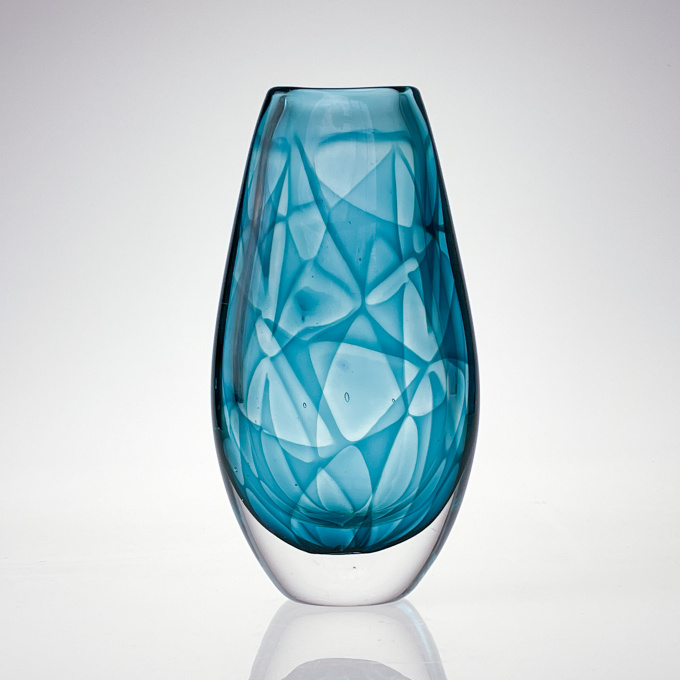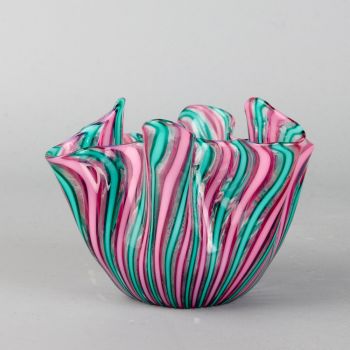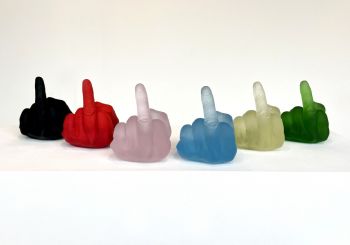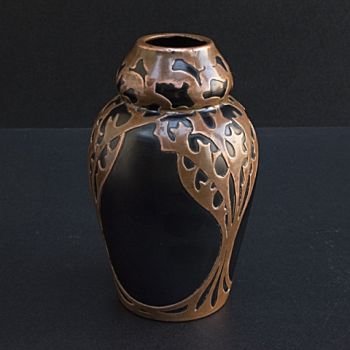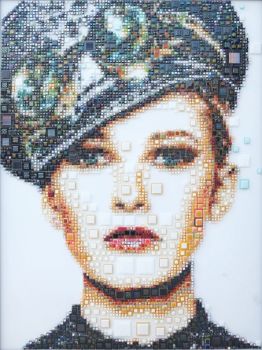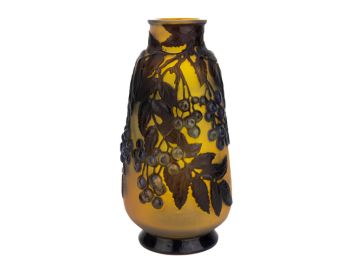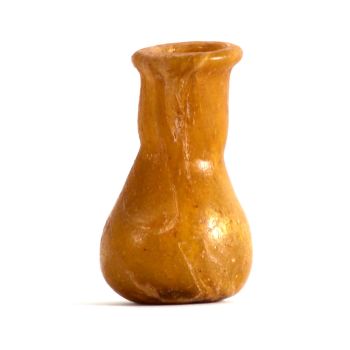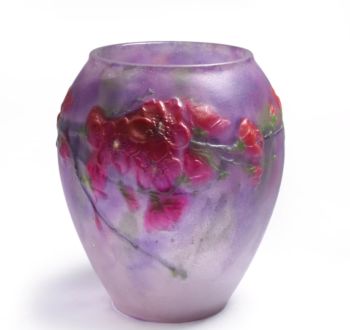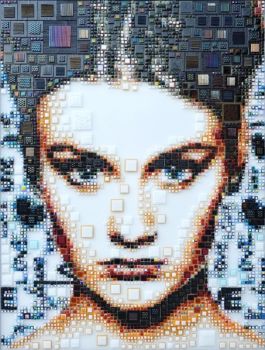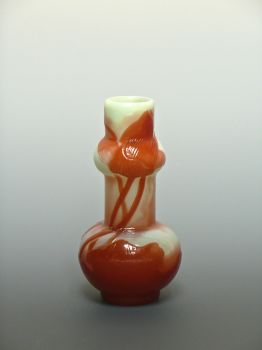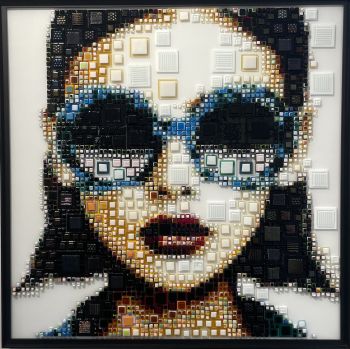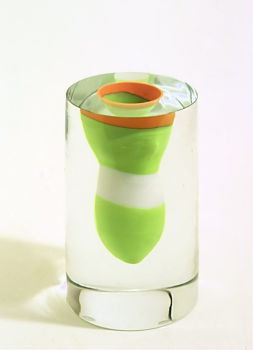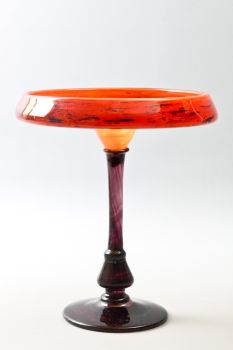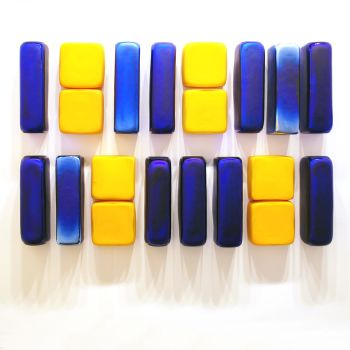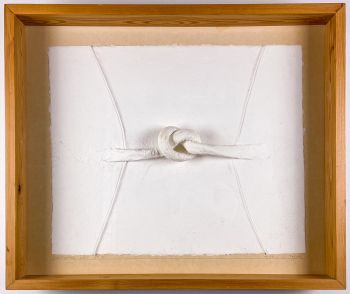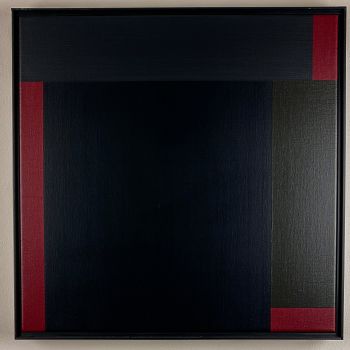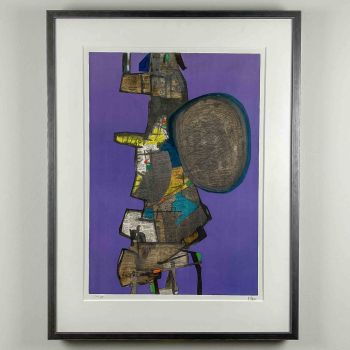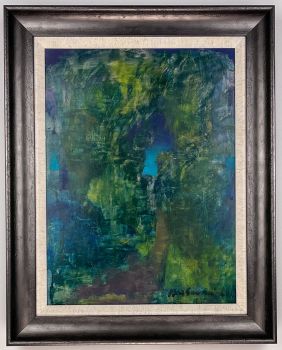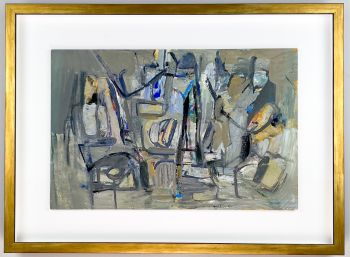Turquoise and clear glass art-object "Colora", model LH 1674 - Kosta Glasbruk, Sweden 1960's 1960 - 1969
Vicke Lindstrand
Verre
26 ⨯ 13 ⨯ 7 cm
ConditionVery good
Actuellement indisponible via Gallerease
Van Kerkhoff Art
- Sur l'oeuvre d'artA free blown crystal art object / vase "Colora" with encapsulated turquoise-coloured geometric decoration, model LH 1674. Designed by Vicke Lindstrand and executed by the Swedish glass factory Kosta, presumably in the 1960s.
The "Colora" line consisted of two sizes. A large size, model LH 1674 and a smaller size LH 1673 and were designed the Vicke Lindstrand in the late 1950s.
This specimen is the largest model (LH 1674) in good vintage condition. It's either unsigned or the signature (etching) has become illegible. Hence the relatively low price for this very sought after piece.
About Vicke Lindstrand
Vicke (Viktor Emanuel) Lindstrand (Gotheborg, Sweden 1904 - Kosta, Sweden 1983) was a prominent Swedish glass designer and artist.
He received his education at the Technical School for Glass and Ceramics and went on to work as an artistic director at the Swedish glass company Orrefors. Throughout his career, Lindstrand developed a reputation as one of Sweden's most talented glass designers, known for his innovative use of traditional glassblowing techniques and his ability to create pieces that were both aesthetic and functional.
One of Lindstrand's most famous designs is the series of vases that he created for Orrefors in the 1930s. These vases are known for their simple yet elegant shapes, and their use of bright, vibrant colours. They were unlike anything that had been seen before in the glassware industry, and helped to establish Orrefors as a leader in the Scandinavian design movement. Lindstrand's work was highly sought after by collectors and design enthusiasts, and his pieces are still considered to be some of the most important examples of 20th-century Swedish glass design.
Throughout his career, Lindstrand received numerous awards and honors for his work. He was a member of the Royal Academy of Fine Arts in Sweden, and his work was exhibited in museums and galleries around the world.
Condition
This art-object is in good vintage condition, some minor scratches and wear consistent with age and use. No cracks or chips. A few airbubbles in the glassmass. For more information on the condition, please contact us and we can provide a condition report.
Literature
William L. Geary, Scandinavian glass p.58-60
Dimensions
H. 26,2 cm
W. 13,5 cm
D. 7,1 cm
Weight 3060 grams - Sur l'artiste
Victor Emanuel Lindstrand, connu sous le nom de Vicke Lindstrand (27 novembre 1904 à Göteborg - 7 mai 1983 à Kosta) était un designer verrier, designer textile et céramique et peintre suédois. Il est considéré comme un pionnier de l'art verrier suédois. Son travail faisait partie des compétitions d'art aux Jeux olympiques d'été de 1932 et aux Jeux olympiques d'été de 1936.
Enfant, Lindstrand s'intéressait au dessin. Il avait étudié l'art commercial et travaillé dans l'illustration commerciale avant de commencer sa carrière chez le fabricant de verre Orrefors en 1928. Il a lancé des conceptions de verre d'art plus audacieuses chez Orrefors et, avec Edvin Öhrström et Knut Bergqvist, il a inventé la technique Ariel.
En 1950, il rejoint Kosta Glasbruk en tant que directeur artistique avant de prendre sa retraite en 1973. Chez Kosta, il était le designer dominant, prêtant son nom à de nombreux designs désormais classiques. À ce stade, Lindstrand a commencé à injecter de plus en plus de couleurs dans ses créations, ce qui a abouti à des designs emblématiques tels que Trees in the Fog et Autumn.
Il a passé les 10 dernières années de sa vie en tant qu'artiste indépendant à travailler avec Hanne Dreutler et Arthur Zirrnsack au Studio Glashyttan à Åhus.
Il fait ses débuts de designer à l'exposition universelle de Stockholm en 1930, où il présente douze vases en verre à décor d'émail aux motifs exotiques. Pour cela, il a reçu une grande attention des publications internationales de design.
Lindstrand a ajouté de nouvelles dimensions artistiques au verre Orrefors déjà célèbre avec ses conceptions uniques et la revitalisation des formes et techniques classiques. Pendant son séjour à Orrefors, il travaille le verre gravé et les vases Graal. Avec le sculpteur Edvin Öhrström, il a développé la nouvelle technique Ariel (nommée par sa femme actrice Kristina).
Orrefors ne pouvait pas se permettre de garder Lindstrand pendant la guerre et entre 1943 et 1950, il devint le chef créatif d'Uppsala Ekeby, où il conçut de nombreux objets en grès différents allant des pots aux sculptures figuratives.
Êtes-vous intéressé par l'achat de cette oeuvre?
Artwork details
Related artworks
- 1 - 4 / 24
Artiste Inconnu
François-Théodore Legras – Tall “Fleurs de Pommier” apple blossoms vase1900 - 1909
Prix sur demandeAntiques Emporium
Gabriel Argy-Rousseau
Gabriël Argy-Rousseau – Crabes et Algues vase – 19201920 - 1929
Prix sur demandeAntiques Emporium
1 - 4 / 24- 1 - 4 / 24
- 1 - 4 / 12

